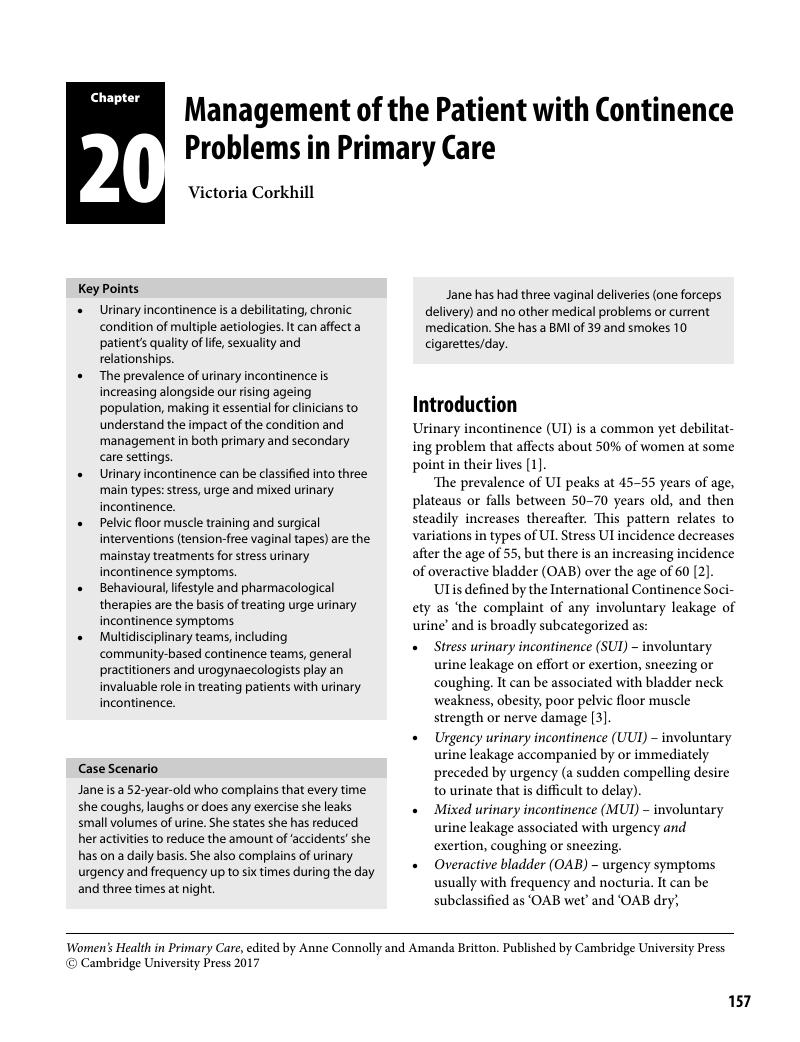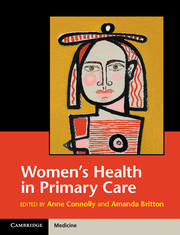Book contents
- Women's Health in Primary Care
- Women's Health in Primary Care
- Copyright page
- Contents
- Contributors
- Foreword
- Preface
- Chapter 1 The Physiology of the Menstrual Cycle and its Impact on Menstrual Cycle Disorders
- Chapter 2 Management of Children and Adolescents with Gynaecological Problems in Primary Care
- Chapter 3 Contraceptive Choices in Primary Care
- Chapter 4 Managing Contraception Problems in Primary Care
- Chapter 5 Management of Vaginal Discharge in Primary Care
- Chapter 6 Sexually Transmitted Infections Managed in Primary Care
- Chapter 7 Cervical Pathology in Primary Care
- Chapter 8 Management of Patients with Psychosexual Problems in Primary Care
- Chapter 9 Infertility Management in Primary Care
- Chapter 10 Ectopic Pregnancy from a Primary Care Perspective
- Chapter 11 Management of Miscarriage in Primary Care
- Chapter 12 Pregnancy-Related Issues Relevant for Primary Care
- Chapter 13 Postnatal Care in Primary Care
- Chapter 14 Polycystic Ovary Syndrome
- Chapter 15 Management of Premature Ovarian Insufficiency in Primary Care
- Chapter 16 Premenstrual Disorders PMD
- Chapter 17 Non-Menstrual Vaginal Bleeding Management in Primary Care
- Chapter 18 Management of the Patient with Suspected Endometriosis in Primary Care
- Chapter 19 Management of the Patient with Heavy Menstrual Bleeding in Primary Care
- Chapter 20 Management of the Patient with Continence Problems in Primary Care
- Chapter 21 Managing Cystitis in Primary Care
- Chapter 22 The Management of Ovarian Cysts in Primary Care
- Chapter 23 Managing Menopause in Primary Care
- Chapter 24 Vulval Dermatoses in Primary Care
- Chapter 25 Management of the Patient with Pelvic Organ Prolapse in Primary Care
- Chapter 26 Ovarian Cancer: Improving Outcomes
- Chapter 27 The Management of Endometrial Hyperplasia and Carcinoma in Primary Care
- Chapter 28 The Management of Fibroids in Primary Care
- Chapter 29 Osteoporosis and Fracture Prevention in Primary Care
- Chapter 30 Management of the Patient with Benign and Malignant Breast Conditions in Primary Care
- Index
- Plate Section
- References
Chapter 20 - Management of the Patient with Continence Problems in Primary Care
Published online by Cambridge University Press: 29 April 2017
- Women's Health in Primary Care
- Women's Health in Primary Care
- Copyright page
- Contents
- Contributors
- Foreword
- Preface
- Chapter 1 The Physiology of the Menstrual Cycle and its Impact on Menstrual Cycle Disorders
- Chapter 2 Management of Children and Adolescents with Gynaecological Problems in Primary Care
- Chapter 3 Contraceptive Choices in Primary Care
- Chapter 4 Managing Contraception Problems in Primary Care
- Chapter 5 Management of Vaginal Discharge in Primary Care
- Chapter 6 Sexually Transmitted Infections Managed in Primary Care
- Chapter 7 Cervical Pathology in Primary Care
- Chapter 8 Management of Patients with Psychosexual Problems in Primary Care
- Chapter 9 Infertility Management in Primary Care
- Chapter 10 Ectopic Pregnancy from a Primary Care Perspective
- Chapter 11 Management of Miscarriage in Primary Care
- Chapter 12 Pregnancy-Related Issues Relevant for Primary Care
- Chapter 13 Postnatal Care in Primary Care
- Chapter 14 Polycystic Ovary Syndrome
- Chapter 15 Management of Premature Ovarian Insufficiency in Primary Care
- Chapter 16 Premenstrual Disorders PMD
- Chapter 17 Non-Menstrual Vaginal Bleeding Management in Primary Care
- Chapter 18 Management of the Patient with Suspected Endometriosis in Primary Care
- Chapter 19 Management of the Patient with Heavy Menstrual Bleeding in Primary Care
- Chapter 20 Management of the Patient with Continence Problems in Primary Care
- Chapter 21 Managing Cystitis in Primary Care
- Chapter 22 The Management of Ovarian Cysts in Primary Care
- Chapter 23 Managing Menopause in Primary Care
- Chapter 24 Vulval Dermatoses in Primary Care
- Chapter 25 Management of the Patient with Pelvic Organ Prolapse in Primary Care
- Chapter 26 Ovarian Cancer: Improving Outcomes
- Chapter 27 The Management of Endometrial Hyperplasia and Carcinoma in Primary Care
- Chapter 28 The Management of Fibroids in Primary Care
- Chapter 29 Osteoporosis and Fracture Prevention in Primary Care
- Chapter 30 Management of the Patient with Benign and Malignant Breast Conditions in Primary Care
- Index
- Plate Section
- References
Summary

- Type
- Chapter
- Information
- Women's Health in Primary Care , pp. 157 - 167Publisher: Cambridge University PressPrint publication year: 2017



